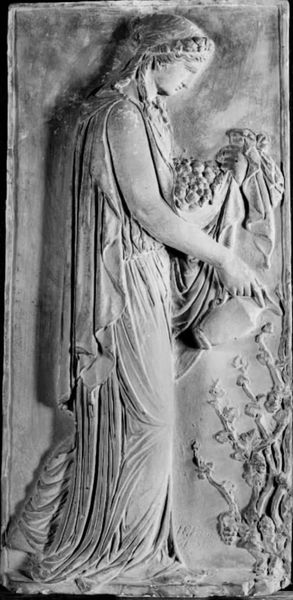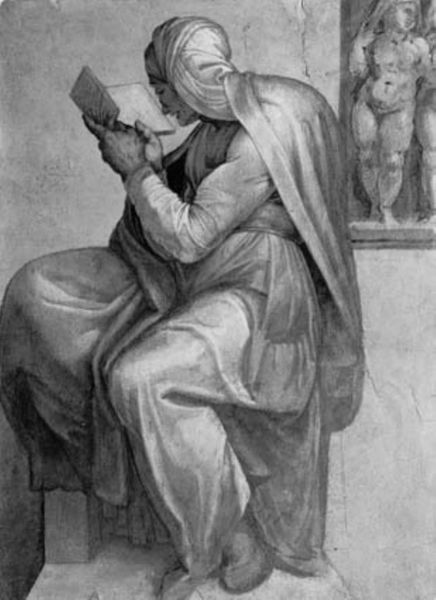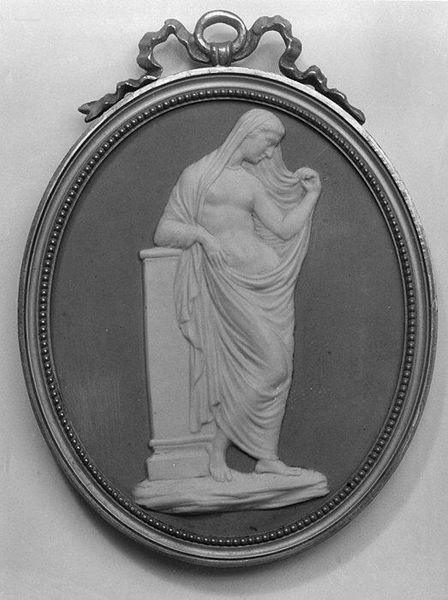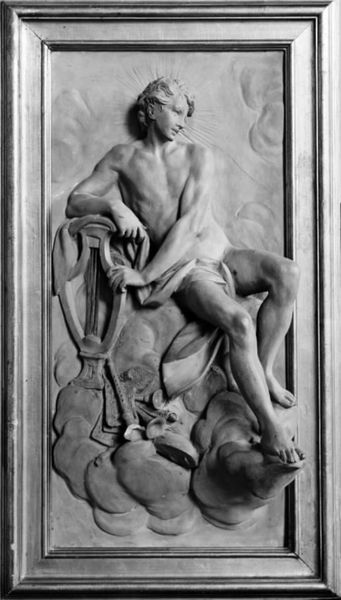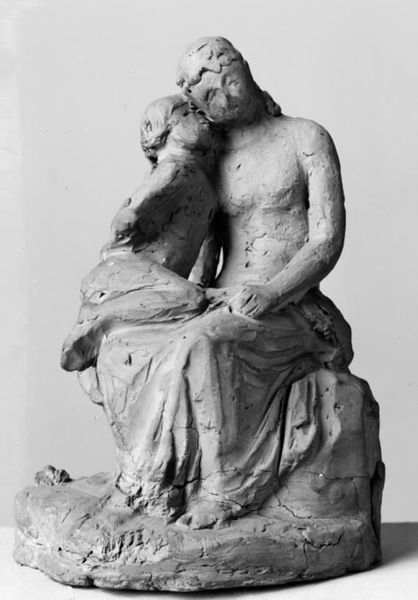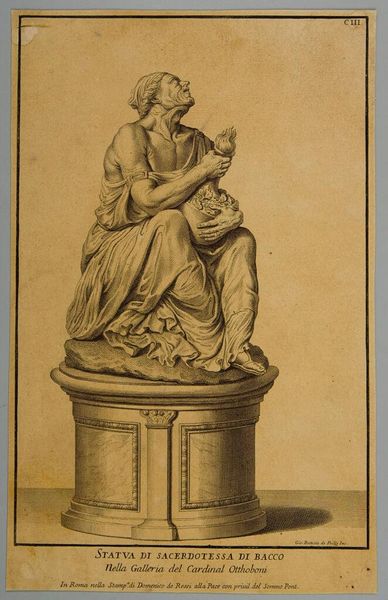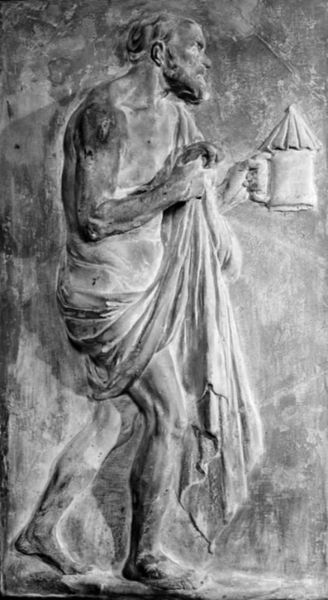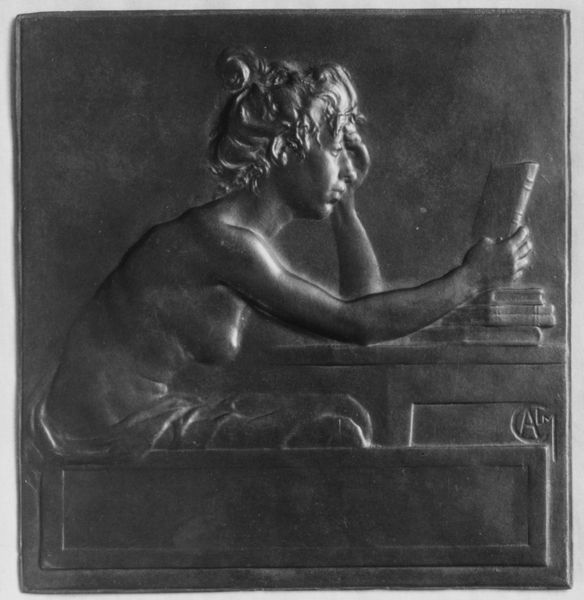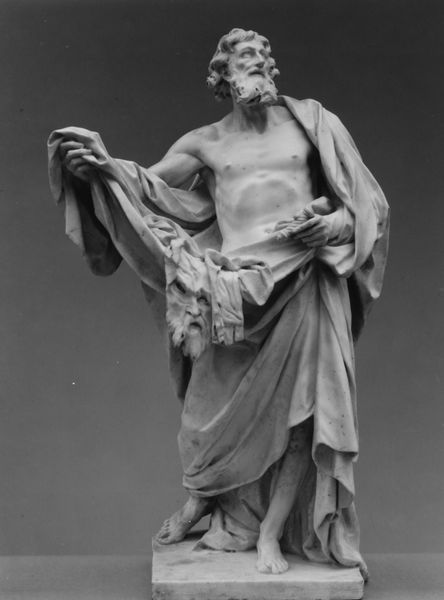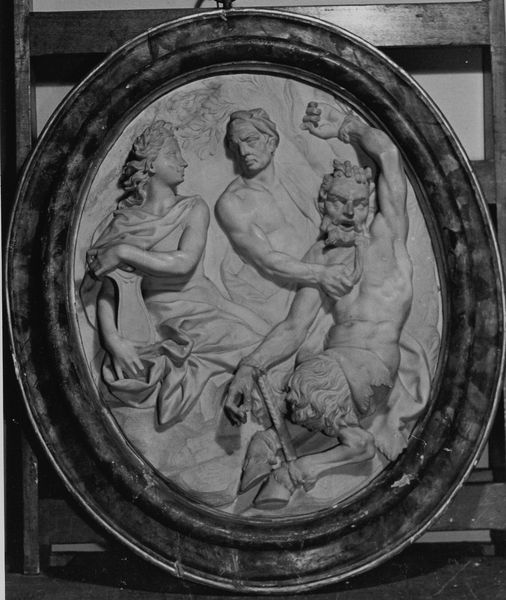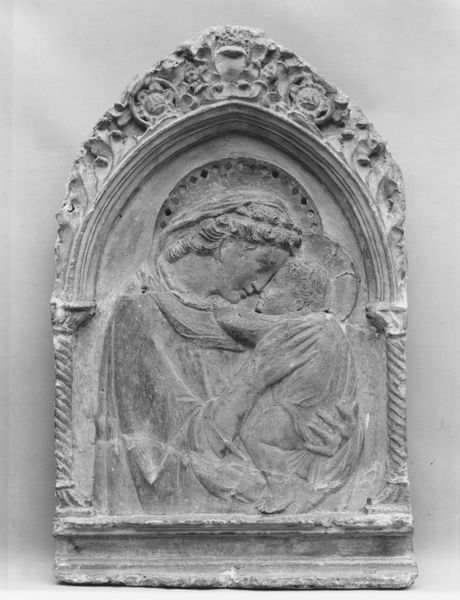
Den sørgende muse. Erato, lyrikkens muse siddende med kinden støttet mod sin lyre 1833
0:00
0:00
relief, sculpture, marble
#
neoclassicism
#
sculpture
#
greek-and-roman-art
#
relief
#
black and white format
#
figuration
#
sculpture
#
black and white
#
monochrome
#
marble
#
monochrome
Dimensions: 75.5 cm (height) x 53 cm (width) x 8 cm (depth) (Netto)
Editor: Here we have Hermann Ernst Freund’s marble relief from 1833, "Den s\u00f8rgende muse. Erato, lyrikkens muse siddende med kinden st\u00f8ttet mod sin lyre" (The mourning muse. Erato, the muse of lyrics, sitting with her cheek resting on her lyre). The monochrome and somewhat mournful appearance definitely catches your eye. What can you tell us about how this sculpture reflects its historical context? Curator: Well, beyond its neoclassical style nodding to Greek and Roman art, this piece prompts us to consider the institution surrounding its creation. It was produced for a specific context – a museum. How do you think the public role of art shapes its themes here, especially in this almost sentimental depiction? Editor: I suppose showing Erato, the muse of lyric poetry, in such a sorrowful state makes it relatable. Maybe it suggests that even sources of creativity can experience sadness? Curator: Exactly. Consider that the Danish Golden Age emphasized national identity through art. Showing a muse in melancholy challenges a simplistic narrative of triumph, suggesting even national genius experiences hardship. It invites viewers to sympathize, forging a stronger connection with art as a reflection of the human condition. Do you think that feeling would translate to all audiences? Editor: Hmm, perhaps audiences today might read the sentimentality differently, maybe as melodramatic or even a bit cliché? The meaning would definitely have shifted with time, right? Curator: Precisely. Our own socio-political and cultural environment always colours how we receive art, so there is not only one interpretation but many. It’s as important to recognize those possible diverse interpretations as much as what was initially intended, wouldn’t you say? Editor: Absolutely! It’s interesting how even a seemingly straightforward neoclassical piece like this holds so many layers when you start to think about the politics of display and reception. Thanks for the insight!
Comments
No comments
Be the first to comment and join the conversation on the ultimate creative platform.

